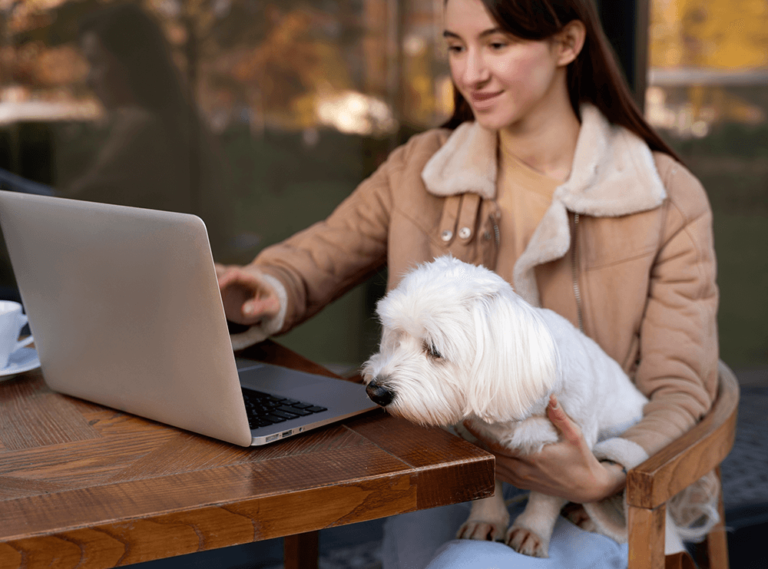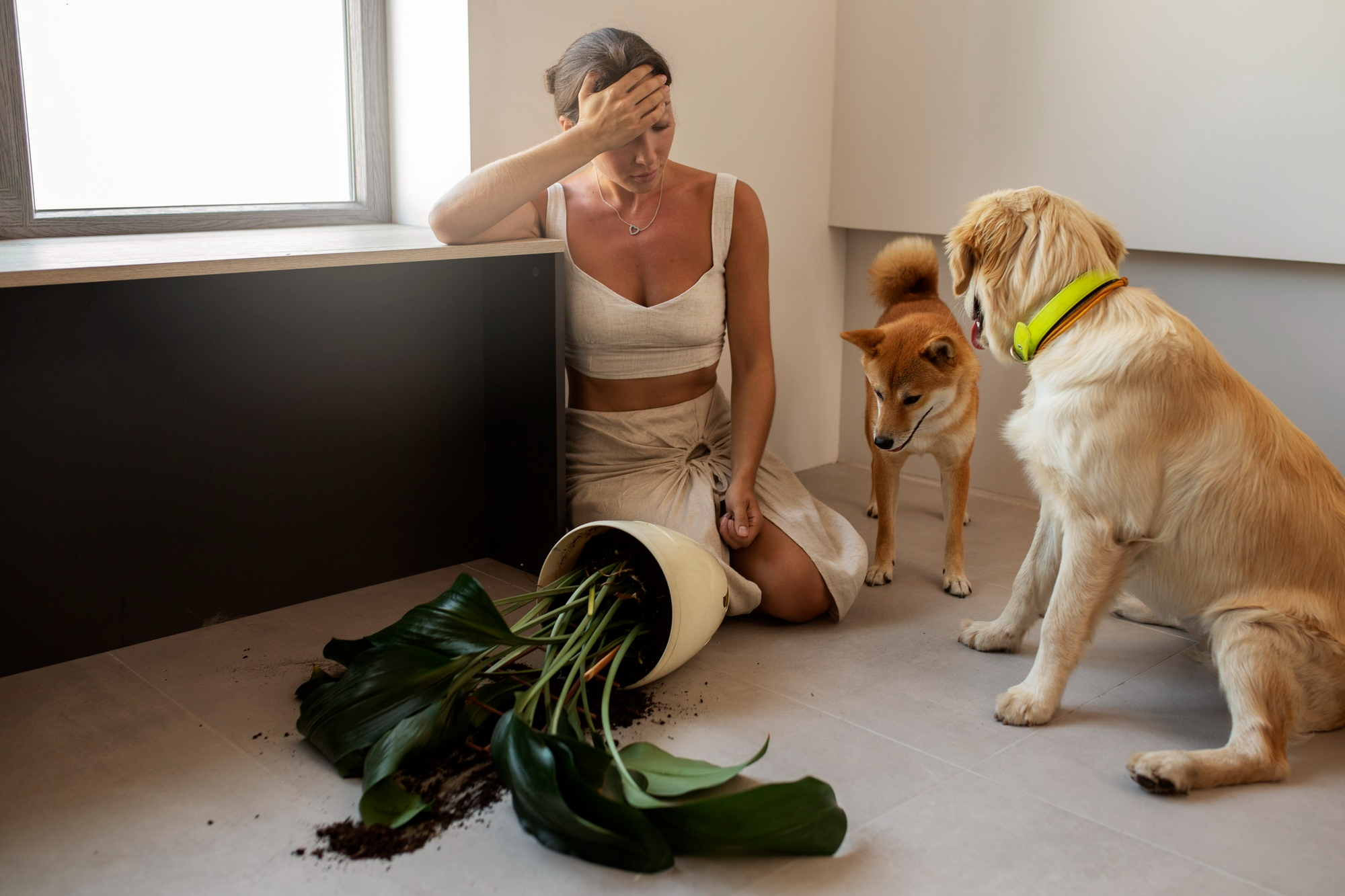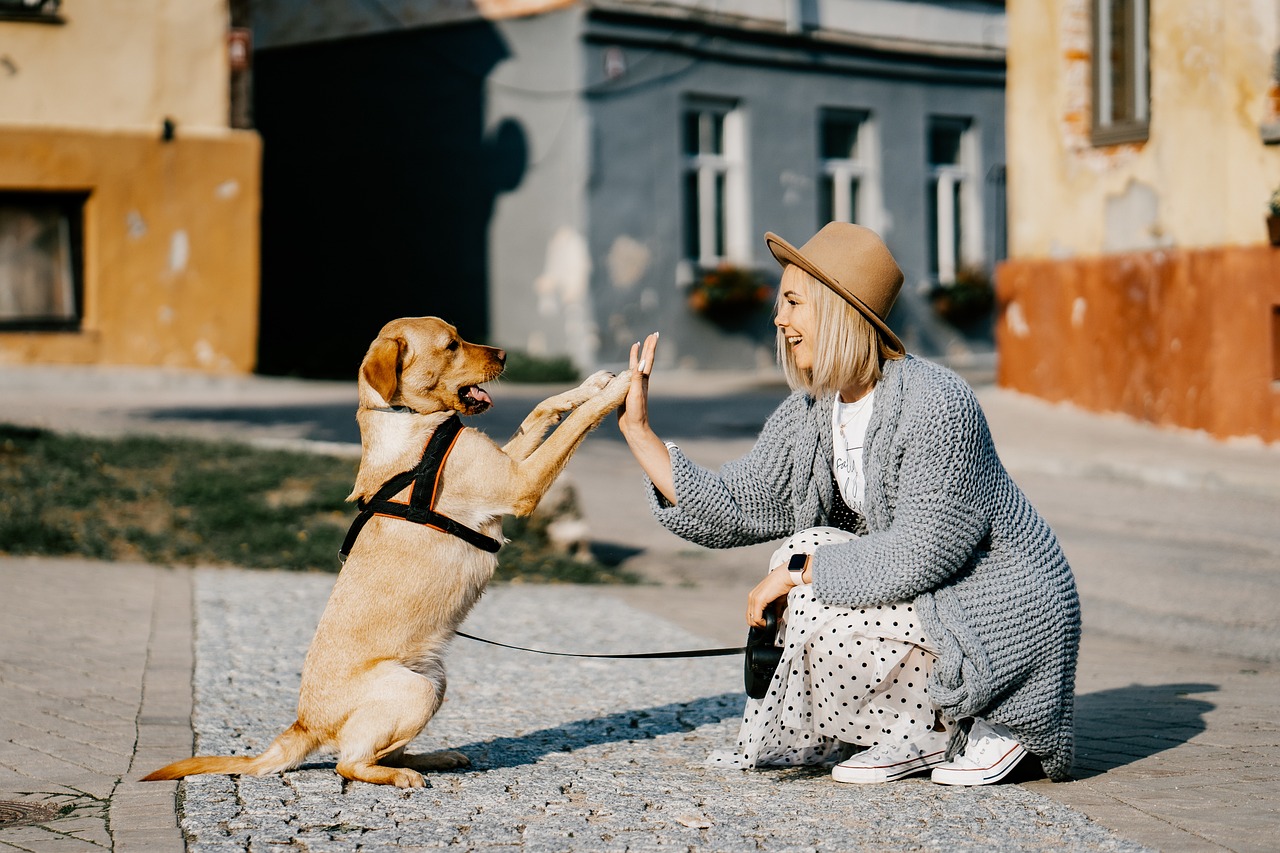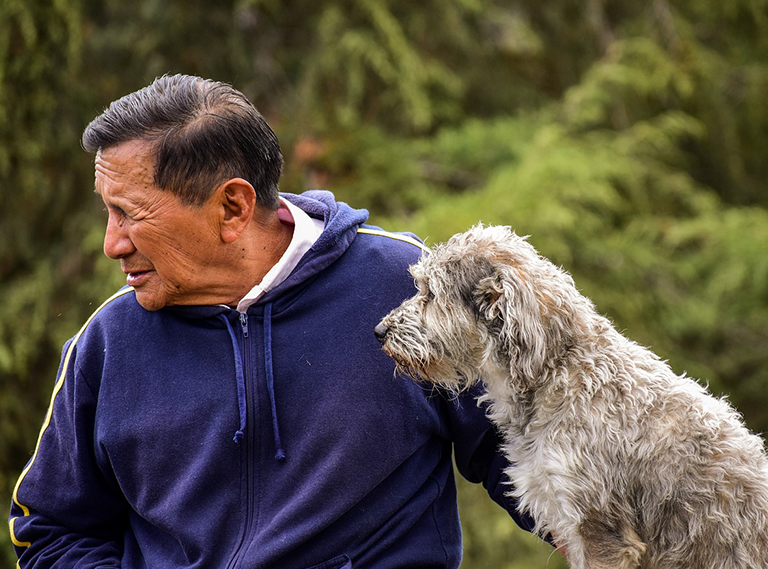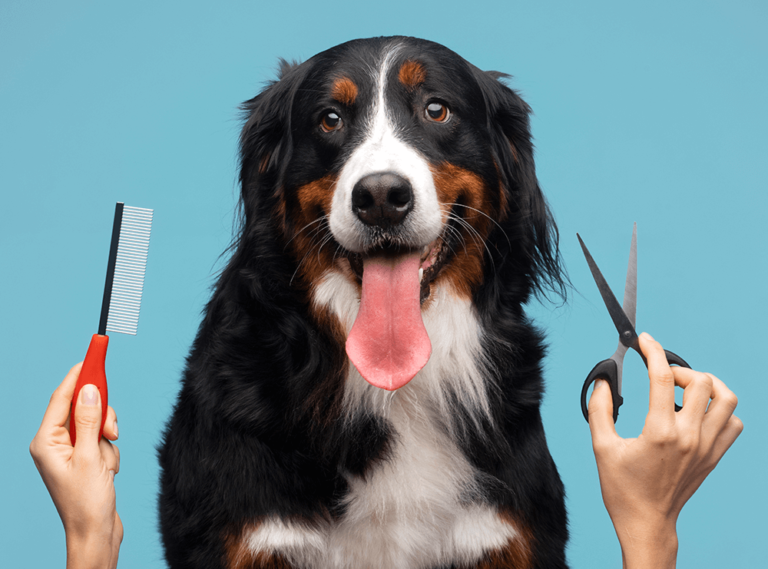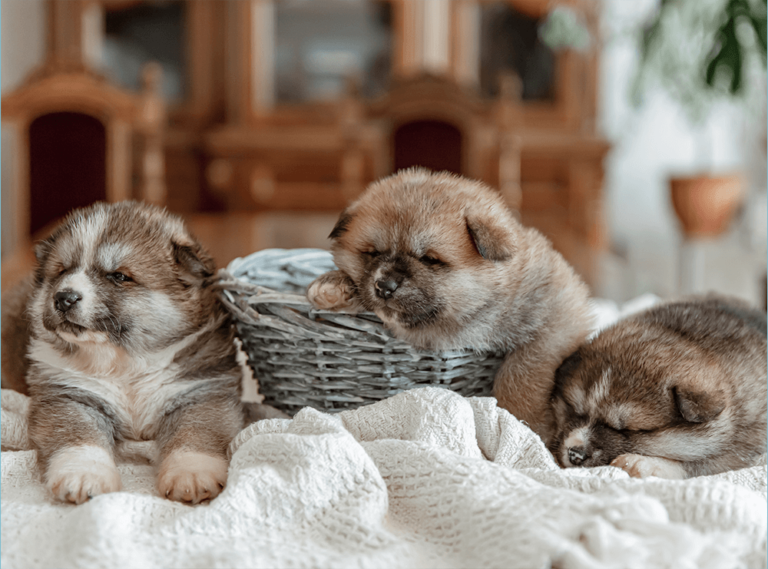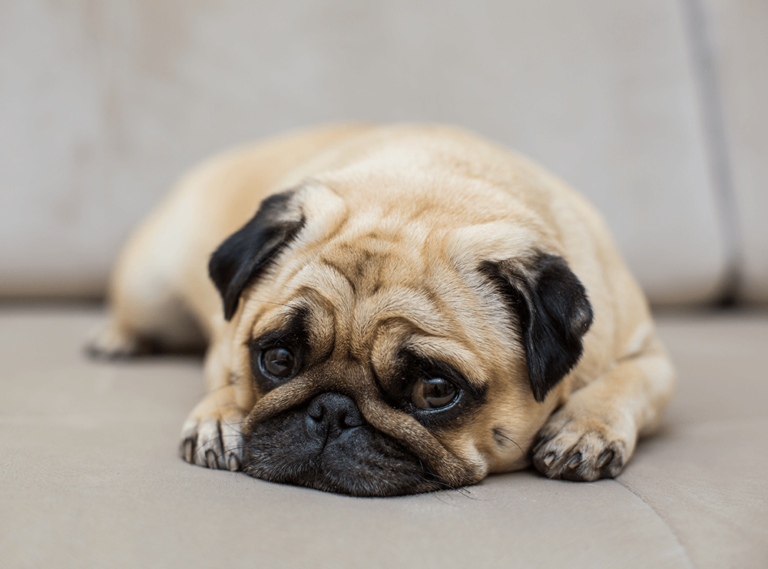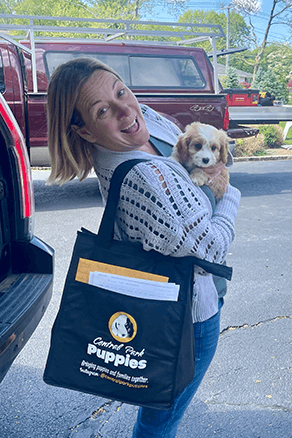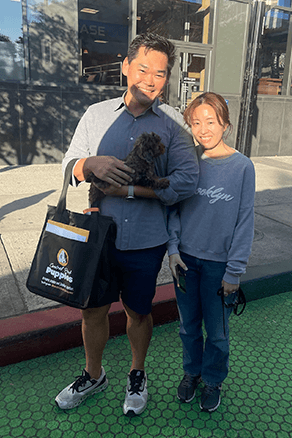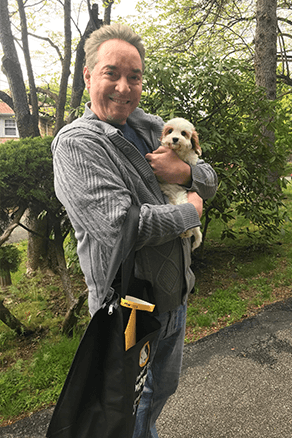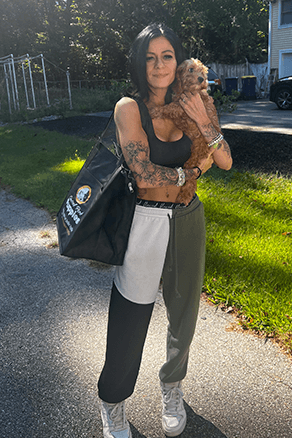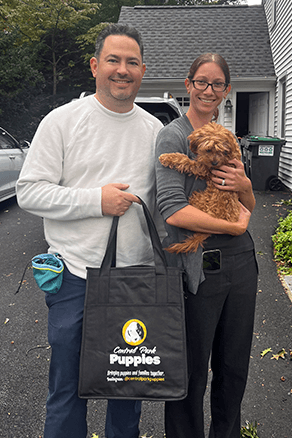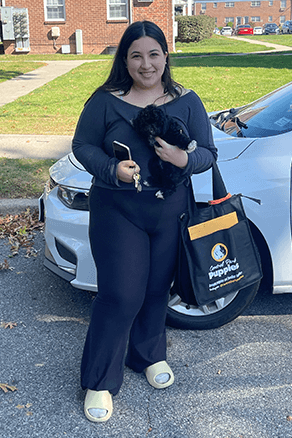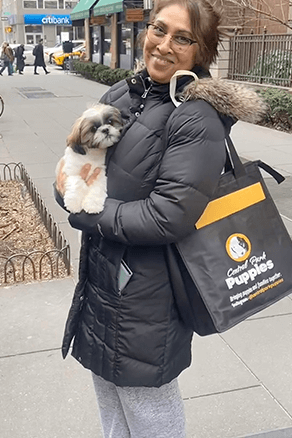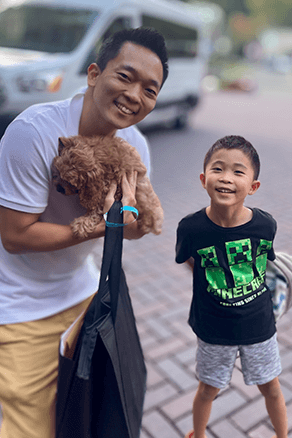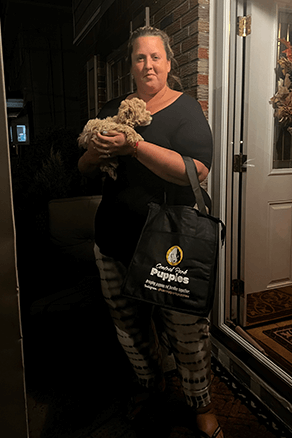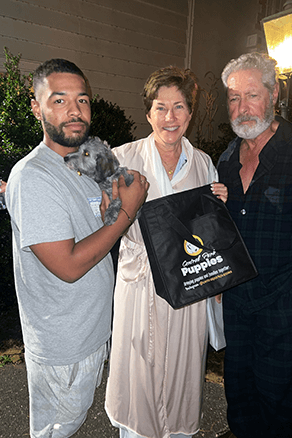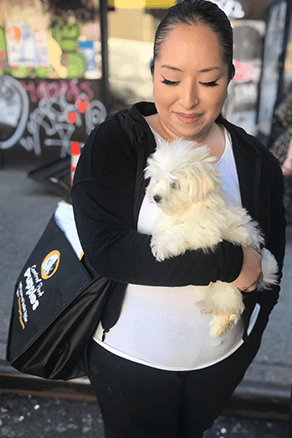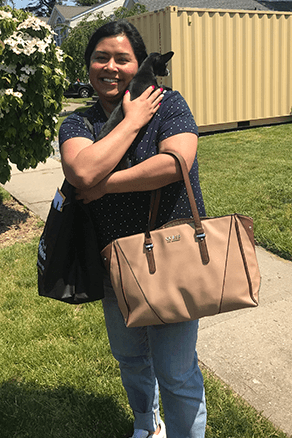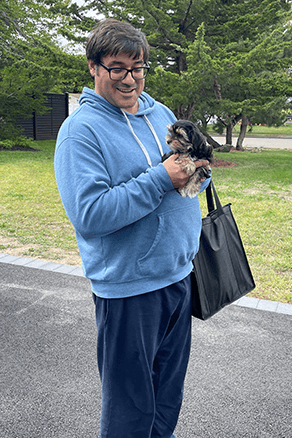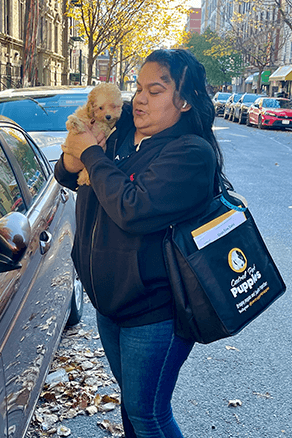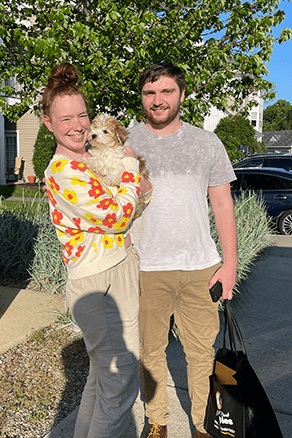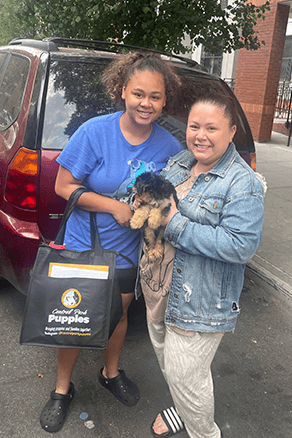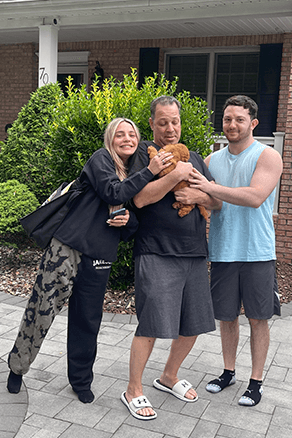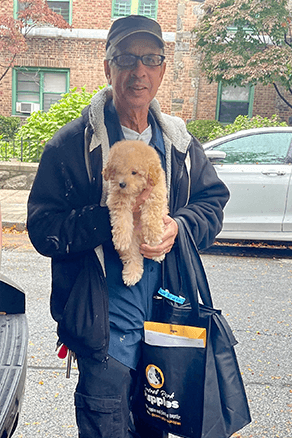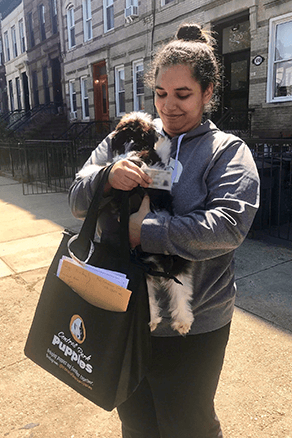Raising a puppy when you work full-time can be a challenging experience- but also so rewarding! Identifying the best options for raising your new dog is essential whether you are thinking about potty training techniques, crate training, or dealing with separation anxiety.
Join us as we provide the best recommendations for how to successfully raise a puppy when you have a full-time job. From pet cameras to dog walkers, puppy proofing room advice to doggy daycare services, we have the information you need to raise a healthy, happy puppy even if you work full time.
-
Leaving a puppy alone while working
Leaving a puppy alone while at work can be difficult, but this is necessary for the puppy’s development.
Importance of alone time
Being constantly in the company of people can make a puppy over-dependent and prevent them from learning to be alone. Establishing independence and self-confidence is essential for puppies. As much as it’s necessary to spend time with your pup, they also need time alone to practice their coping skills.
How long can puppies be left alone?
This number depends on your puppy’s age and toilet training progress.
- Older puppies should be left alone for no more than 4 hours during the day while house training
- If they are already toilet trained, it is safe to leave them alone for more extended periods
- Consider getting a puppy sitter if you will be away for more than 4 hours
How long can puppies hold their pee?
Determine the length of time a puppy can hold their pee by taking their age in months plus one; for example, a 2-month-old puppy can hold their pee for 3 hours maximum, while a 4-month-old puppy can hold their bladder for 5 hours.
This equation levels out at around 6-7 months, with no dog comfortable holding their pee for more than 8 hours. Puppies should always be supervised for 8 hours as they need frequent toilet breaks and human guidance to properly potty train.
Comfort breaks
Puppies also need regular comfort breaks, which are short breaks where they can have a drink of water, stretch their legs, and go potty. Schedule breaks around the puppy’s age, ability to hold their pee, and individual needs.
Remember that when raising a puppy, they are still learning, and frequent comfort breaks can help them develop good potty training habits.
Owners should be prepared to take the puppy out for a comfort break every 1-2 hours when they are at home and make arrangements for a pet sitter or dog walker to take the puppy out for comfort breaks while away at work.
-
How to potty train a puppy when you work
Understanding how to train your pup while away from home is essential for successful housebreaking.
Potty Training Tips for Working Owners
Potty training a puppy can be challenging, especially for working owners who may need more time with their pup than they would like. However, it is possible to train your puppy with patience and dedication, even when you have a busy schedule.
Crate Training and Separation Anxiety
Crate training is an effective way to potty train a puppy when you work. The crate can provide a safe and secure environment for your pup while you are away and also prevent anxiety. When using a crate, it’s crucial to ensure the puppy has enough room to stand up, turn around, and lie comfortably. Start by leaving the puppy in the crate for short periods and gradually increase the duration as they become more comfortable.
Puppy Pads, Pen, or Dog Walker
Another option for potty training a puppy when you work is to use puppy pads or a puppy pen. Place the items in a designated area, such as a laundry room or bathroom, to provide a spot for your pup to go to the bathroom.
If you can’t be home to take your puppy out, consider hiring a dog walker or dog sitter to take your pup out for scheduled potty breaks and walks.
Dog Walker vs. Dog Sitter
When choosing between a dog walker and a dog sitter, it’s essential to consider the difference in their services. Dog walkers typically provide midday walks, while dog sitters stay with your pup for extended periods.
A dog walker can help to give your pup the exercise and stimulation it needs, while a dog sitter can provide additional companionship and help to reduce anxiety.
Only you can decide which is the best choice for your pup, but both can help make potty training a success.
House Training Times for Busy Owners
It’s crucial to establish a consistent routine for potty breaks and house training when you are at home. This may include taking your puppy out first thing in the morning, after meals, and before bedtime.
Supervising your puppy while they are loose in the house is also something to consider. And you will need to puppy-proof a room where they can stay when you are away.
What If You Have to Leave Your Puppy Alone For More Than an Hour
If you have to leave your puppy alone for more than an hour, it’s essential to make arrangements for someone to take them out for potty breaks.
This can be a dog walker, dog sitter, or pet sitter. It’s also important to make sure your puppy has access to food, water, and a comfortable place to sleep while you are away.
5 Quick Tips for Potty Training Your Puppy While Working 9 to 5
- Create a Potty Schedule: The first step in potty training is to create a consistent schedule that your pup can learn and follow.
- Use a Crate: Crates provide a safe and secure space where puppies can stay unattended.
- Use Doggie Doors: If you have a safe and secure outdoor area, doggie doors can give your pup access to the outdoors when you are away.
- Hire Someone: If you can’t be home to take your pup outside during the day, hiring a pet sitter or dog walker can be a great way to ensure that your puppy gets the potty breaks they need.
- Reward Positive Behaviour: Potty training requires patience and consistency, so reward your pup for good behavior.
-
How long can you leave a 10 – 12 week old puppy alone?
It is essential to carefully consider how much time a 10 – 12 week old puppy will be left alone.
Factors Affecting Alone Time
The time any dog should be left alone will depend on several factors, including age and development, potty training progress, and individual needs. Other factors that may affect alone time include the presence of another dog in the household and the puppy’s level of separation anxiety.
Maximum Alone Time
For a 10 – 12 week old puppy, the maximum amount of alone time should be no more than two hours. That is because, at this age, puppies cannot hold their bladders and will need frequent toilet breaks.
Gradual Exposure to Alone Time
To help a 10 – 12 week-old puppy adjust to being alone, gradually increase their time. Start with short periods, such as 15-30 minutes, and gradually increase the duration over several weeks.
Your puppy will become more comfortable with being alone, and you will be able to monitor their behavior and ensure they are coping well.
Preparing a 10-12 Week-Old Puppy for Longer Alone Time in the Future
As the puppy grows and becomes more comfortable with being alone, you may find that they can tolerate more extended periods of alone time. However, it is essential to note that even older dogs should only be left alone for 8 hours.
Importance of Supervision and Monitoring
Regardless of the amount of alone time, providing a safe and comfortable environment for your puppy while you are away is crucial. It’s also important to supervise the puppy during their alone time and to be alert for any signs of distress or discomfort.
-
Monitor your puppy with a pet camera.
For those raising a puppy when working full time, it is essential to consider all monitoring methods while away from home. One excellent option is to install a pet camera in your home.
Benefits of using a Pet Camera
- A pet camera is a perfect tool for monitoring your puppy, allowing you to check in and ensure they are safe.
- With two-way audio, you can interact with your puppy remotely, which can help to alleviate separation anxiety and maintain a connection.
- Pet cameras have features like motion detection and night vision, providing security and peace of mind.
How to Choose the Right Pet Camera
When choosing a pet camera, it’s essential to consider the size and layout of your home and your puppy’s schedule and habits. Some pet cameras even come with features like treat dispensers, which can help feed or train your puppy while you are away.
Choosing a pet camera that is easy to set up and use is also vital. And make sure you have clear and reliable video and audio.
Setting up and Using a Pet Camera
Once you have chosen the right pet camera, it’s essential to set it up and test it to ensure it works properly. Adjust the camera’s angle, position it to get the best view of your dog, and connect the camera to your home’s Wi-Fi network.
You should also familiarize yourself with the camera’s features and controls, such as two-way audio and motion detection.
Monitoring and Interacting with your Puppy using a Pet Camera
Once your pet camera is set up and working, you can start observing your puppy and interacting with them remotely. You may be able to talk to your puppy through the camera’s two-way audio and use the camera’s treat dispenser to reward them for good behavior.
Additionally, you can watch for any signs of distress, such as a teething puppy chewing on furniture, and take appropriate action.
-
Setting Up a Puppy-Proof Room
Puppy-proofing an entire apartment or house can be a daunting task. Still, ensuring that your puppy has a safe and comfortable place to stay while you are away is vital.
Setting up a designated puppy-proof room, with items such as a crate and bed, toys and treats, water bowls, and any other necessities for your new family member, is an alternative you may want to consider.
Creating a Safe Space for Your Puppy
When raising a puppy while working full-time, it’s vital to ensure that your new furry friend has a safe and comfortable place to stay while you are away.
Setting up a designated puppy-proof room, a spare room, a laundry room, or even a bathroom is a great way to ensure that your pup is safe and comfortable while you are away from home.
The idea is to create a space where your puppy can be alone for a few hours without causing damage or getting into trouble.
Preparing a Puppy-Proof Room
- Consider your puppy’s age, size, and individual needs when designing a puppy-proof room.
- Provide items like a crate, bed, toys, treats, water bowls, and other necessities for your pup.
- Make sure to remove any hazardous or tempting items that could put your puppy in danger.
Providing Comfort and Entertainment for Your Puppy
It’s crucial to provide your puppy with items that will keep them comfortable and entertained while alone, including kongs, stuffed animals, and chew toys.
It is vital to keep your puppy occupied and prevent them from getting bored or destructive. Additionally, provide your puppy with a cozy blanket or other comfortable items, making them feel secure and relaxed.
Gradually Introducing Your Puppy to Their New Space
It’s important to gradually introduce your puppy to their new room and give them time to adjust. Start by leaving them in the room for short periods, such as 15 minutes, and gradually increase the duration over several weeks.
This will help your puppy become more comfortable with being alone in the room and allow you to monitor their behavior and ensure they are coping well.
Additionally, spending time with your puppy in the room is essential, as is playing and bonding with them, especially during the first few weeks of bringing them home. You want them to see this room as a cheerful and familiar space, not just a place where they are left alone.
-
What about doggy daycare?
If you’re wondering, “Can you leave a puppy alone for 8 hours?” the answer is no. However, doggy daycare can provide an excellent solution for those who work full-time and need to leave their puppy at home.
Understanding Doggy Daycare
Doggy daycare is a service where puppies and dogs are taken care of during the day while their owners are away at work or otherwise occupied. Daycares provide activities such as playtime, socialization, and training. Doggy daycare can be an excellent option for owners who want to provide their puppies with stimulation and exercise while they are away.
Benefits of Doggy Daycare for House-Trained Puppies
For house-trained puppies, doggy daycare can be an excellent option for
- socialization and exercise
- helping to tire them out for the evening, so they can rest when you come home
- learning good behavior from other dogs and their trainers
Toilet Training Considerations for Doggy Daycare
When considering doggy daycare for your puppy, it’s critical to keep their toilet training progress in mind.
Some daycare facilities may require that puppies be fully house-trained before being accepted. In contrast, others may be able to accommodate puppies who are still in the process of being toilet-trained.
Communicating with the daycare staff about your puppy’s needs is essential. Try to work with them to ensure they follow the potty training schedule.
Choosing the Right Doggy Daycare
When choosing a doggy daycare, it’s essential to research different facilities and visit them in person to ensure they are a good fit for your puppy.
Look for facilities with experienced staff, a clean and safe environment, and various activities to keep your puppy stimulated and engaged. It’s also a good idea to ask for references and to speak with other puppy owners who use the facility.
-
Puppy bed wetting or peeing in the crate
Many people don’t realize that puppies are just like human babies in many ways – they need to eat frequently, they need plenty of time to sleep and play, and they need to potty often. Just like human babies, when puppies drink a lot or eat a big meal, they will need to relieve themselves soon after.
And, also like human babies, puppies sometimes soil their beds at night. This is called puppy bed wetting, which many new puppy owners deal with.
Understanding Puppy Bed Wetting
There are several reasons why puppies may bed wet. They haven’t developed complete bladder control. Puppies’ bladders are small, and they haven’t learned how to hold it for long periods. The good news is that puppies will outgrow it within a few months.
Another common reason for puppy bed wetting is separation anxiety. Many puppies become anxious when left alone, leading to accidents in the crate or bed. If your puppy is crate-trained, give him plenty of opportunities to relieve himself before putting him in the crate for extended periods.
And if your puppy seems anxious or stressed when left alone, consider talking to your veterinarian about possible solutions such as dog calming supplements or pheromone diffusers.
Lastly, some puppies may start wetting their beds because they’re not yet fully housetrained. If your puppy has been doing well with housetraining but suddenly starts having accidents in their crate or bed, they may need more frequent potty breaks, or they may need to be taken out more often during the day. Try increasing the number of times you take your puppy out for potty breaks and see if that helps solve the problem.
Causes of Puppy Bed Wetting and Peeing in the Crate
There are several possible causes of puppy bed wetting and peeing in the crate:
- Puppies may simply not have developed complete bladder control yet.
- Some puppies may suffer from stress and anxiety.
- Others may need to be fully housetrained.
- Some medical conditions can also cause puppies to urinate more frequently or have accidents in the crate.
- Anxiety or stress.
- A change in routine.
- Excitement or fear.
If your puppy is wetting their bed or having accidents in the crate, it’s crucial to figure out what might be causing the problem so that you can find a solution. Talk to your veterinarian about any concerns and rule out any medical causes before taking further steps.
Solutions for Managing and Preventing Puppy Bed Wetting
There are several things you can do to manage and prevent puppy bed wetting:
- Make sure your puppy has plenty of opportunities to relieve themself during the day.
- Consider using a belly band or dog diapers if your puppy is male.
- Try not to punish your puppy if they have an accident – this will only make them more anxious and stressed.
- If anxiety is causing your puppy to wet their bed, talk to your veterinarian about possible solutions, such as dog-calming supplements or pheromone diffusers.
-
Preventing separation anxiety
Puppies who have just been separated from their litter mates and brought into a new home often feel some stress.
Understanding Separation Anxiety in Puppies
Anxiety can manifest in various ways, such as barking, howling, scratching doors or windows, eliminating inside the house, and more. If your puppy displays these behaviors when left alone, it is crucial to understand why they may feel anxious and what you can do to help them adjust to being alone.
Identifying the Signs of Separation Anxiety
- The primary sign of detachment stress in puppies is destructive behavior or vocalizations when left alone.
- Other signs include pacing, restlessness, panting, frequent urination and defecation inside the house (even after proper potty training), trembling or shaking, and chewing on items that are not appropriate chew toys.
- If you notice these behaviors when you leave your puppy alone for short periods, they may likely have some anxiety.
Strategies for Preventing Separation Anxiety in Puppies
Fortunately, you can do many things to help prevent stress in puppies. To begin with, always ensure that your pup has plenty of exercise before leaving them alone – this will help tire them out so that they are less likely to become anxious. Additionally:
- Spend time socializing your pup with new people and other dogs.
- Introduce new objects gradually so that they become accustomed to them.
- Give your puppy a safe place to rest when you are gone (like a crate).
- Give your pet stimulating items such as food puzzles and chew toys to keep them entertained.
Training Techniques for Helping Puppies Adjust to Being Alone
Different training techniques can help puppies adjust better to being alone:
- Desensitize your pup by increasing the time they spend away from you.
- Practice departure cues gradually with your pup – for example, leave some treats near the door each morning before leaving and say “Bye!” every time you go out.
- Reward positive behaviors when you come home – if your pup stays calm rather than expressing excitement when you come back, reward this behavior with treats or praise.
- Teach your pup the “Stay” command so that they know how to remain calm while away.
-
Keep your puppy happy
As a puppy parent, it is vital to provide your new pup with a happy and healthy environment.
A happy puppy will be more content, relaxed, and better behaved. In addition, taking care of your puppy’s emotional well-being makes for a healthier and longer life.
Identifying the Factors That Affect a Puppy’s Happiness
Many factors can contribute to a puppy’s happiness or lack thereof. These include:
- Exercise – Regular physical activity helps to keep your pup healthy while providing mental stimulation.
- Socialization – Exposure to other people and animals helps puppies learn how to interact appropriately in different environments.
- Nutrition – Ensure that your pup has access to nutritious food and clean water.
- Mental Stimulation – Provide stimulating toys that challenge their minds.
- Attention/Bonding – Spend quality time with your pup each day so that they feel secure and loved.
- Environment – Make sure that their environment is clean and free from hazards.
Implementing Strategies for Ensuring a Happy Puppy
To ensure that your puppy is as happy as possible, implement the following strategies:
- Spend time playing with them daily.
- Make sure you provide them with plenty of exercise and opportunities for socialization.
- Feed them nutritionally balanced meals made for puppies specifically.
- Avoid human foods (especially those harmful to dogs).
- Provide them with interactive toys such as food puzzles or treat dispensers.
- Give them lots of love and attention.
Monitoring and Maintaining Your Puppy’s Happiness over Time
It is essential to keep an eye on your pup’s behavior so that you can see if something may be affecting their happiness levels. If you notice any changes in behavior or demeanor, take action immediately by making adjustments, such as adding more exercise or spending more time playing together. With consistency and care, you should be able to keep your puppy happy forever!
-
Working from home
Setting up a Puppy-friendly workspace
When setting up your workspace for working at home, consider your pup’s comfort and safety when deciding where to set up your office. Make sure to provide them with a comfortable bed or crate nearby, water bowls, and some toys, so they don’t get bored while you work.
Dealing with anxiety when you’re home but not together
If your puppy has some stress due to your absence, it is necessary to find ways to help them feel more secure in their environment when you are apart. Providing them with calming treats or supplements, interactive puzzle toys that dispense treats, and even playing soothing music, if possible, may help.
Puppy-proofing so you can work
Puppies are often curious creatures that want to explore their environment and try new things – including items they should not be chewing on! To prevent accidents while working at home, make sure to puppy-proof your work area and the rest of the home by hiding or removing any cords or wires that may tempt your puppy to chew.
-
Puppy house training techniques
If you’re starting on your potty training journey, you may want to consider the following:
The basics of house training
- Positive reinforcement is critical for potty training puppies
- Reward your pup when they go outside
- Establish a routine for taking them out to potty (e.g., morning, after meals, bedtime)
Crate training
- Crate training can help puppies learn where to do their business
- Dogs don’t want to soil their sleeping area, so they’re less likely to have accidents indoors if confined to a crate
- Don’t leave puppies in their crates for too long, as it can cause other behavioral issues like barking and chewing
Potty training
One of the most common methods for potty training puppies is using a designated potty area outdoors. They will begin associating that behavior with that location by consistently taking your puppy to this spot and using a cue word or phrase (such as “go potty”). Once they have mastered going potty outdoors, you can then start working on teaching them to hold it indoors for shorter periods until they are fully trained.
Concluding thoughts
Raising a puppy when you work full-time can be tricky, but it is achievable with the right strategies and support. By taking into account your pup’s needs for exercise, nutrition, socialization, and mental stimulation while creating a safe space to relax at home during the day, you will have taken great strides toward ensuring they are as happy as possible.
With help from services such as dog sitters or walkers, if needed, you should be able to balance your working life and be a good pet parent. If you found this helpful, please share it so others may benefit too!
